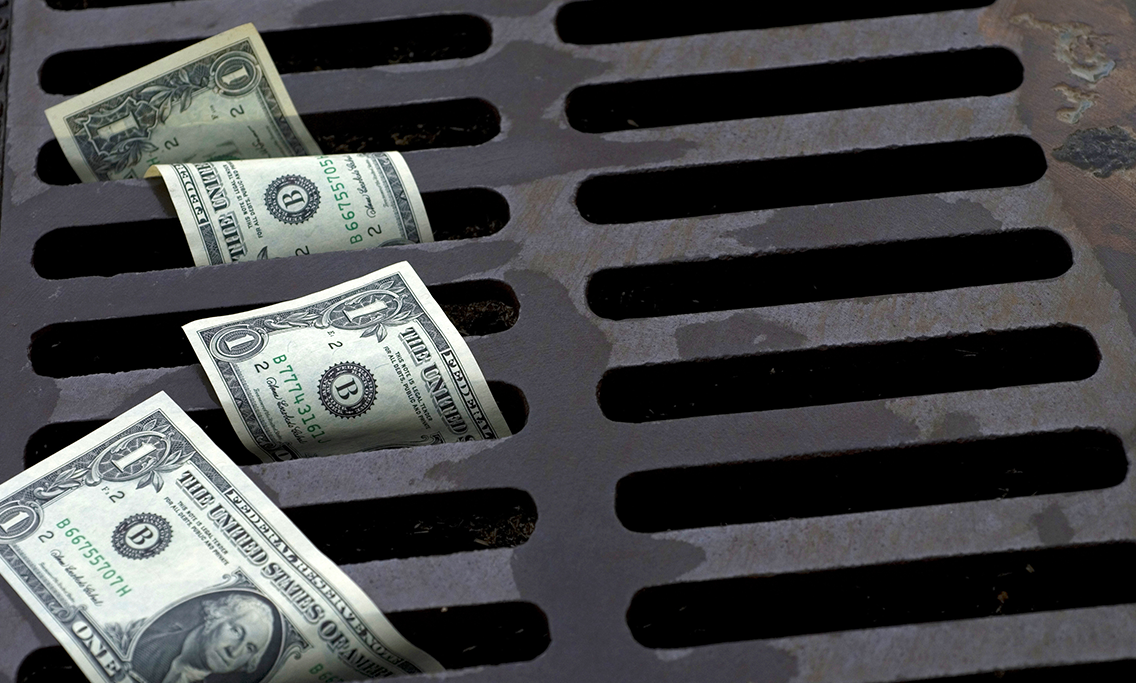3 min read
How the SVB failure could mean new headaches for accounting firms
When the United States’ 16th biggest bank collapses, you can bet the shockwave it generates won’t be mere ripples on the pond.
Now that a little time has passed, one thing is very clear: in coming months, there will be endless analyses, breathless recriminations, a healthy dollop of “I told ya so”s, and probably more than a few investigations over the failure of Silicon Valley Bank (SVB), which was seized by the federal government on Friday, March 10 and subsequently sold its deposits and loans to Raleigh-based First Citizens. The loans were sold at a $16.5 billion discount, with an agreement that the FDIC will share losses and gains on SVB loans in the future. There are plenty of stories out there about what happened, some with a particular spin one way or another designed to drive home the authors’ points. It might be helpful to concentrate on facts alone.

Could someone please explain this mess to me?
In 2017, SVB had around $44 billion in deposits. By the end of 2022, that had grown to nearly $190 billion. In the same time, the bank’s loans book had grown from $23 billion to only $66 billion. This represented a situation in which SVB wasn’t generating as much money on loan interest as it should, given its far larger base of deposits. To shore up its balance sheet, SVB made the expected move for a financial institution: it made what would normally be safe harbor investments mostly in bonds and government securities to the tune of $128 billion.
What happened next is the kind of doomsday scenario usually reserved for dystopian apocalypse films. Mounting inflationary pressure caused the Fed to raise interest rates, driving up bond yields — the benchmark 10-year U.S. Treasury note’s yield was just 1.5% at the end of 2021, but by October of the following year had gone up to over 4% before dropping off to still-elevated numbers.
There is an inverse relationship between bond yields and bond prices, so the value of SVB’s safe-harbor investments took a huge hit, as SVB had acquired them at their peak price. At the same time, rising interest rates slowed borrowing and created a much more complex landscape for venture capital fundraising than we’ve seen in the past decade or more. Depositors in SVB began drawing down their accounts, and SVB was forced to sell its portfolio at a loss of about $1.8 billion.
We’ll stop the story there for a moment to say the part that makes this entire situation a masterclass in frustration: under business as usual, Silicon Valley Bank had sufficient assets to cover its obligations. Unfortunately, what happened next was very much not business as usual.

On March 8, 2023, SVB announced it was going to attempt to raise $2 billion to patch the $1.8 billion dollar hole in its balance sheet. The announcement induced panic among some depositors, who not only acted to move their assets out of SVB, but encouraged their associates also banking with SVB to do the same. A 60% drop in SVB Financial Group’s (SVB’s parent company) stock price on March 9, 2023 seemed to confirm fears, leading to more depositors moving their assets out, and an eventual run on the bank.
There’s more to the story, but at the risk of Seinfelding it, we’ll yada yada over that part. It was all over by March 10.
There’s a whirlwind of highly-charged opinions over who’s to blame, whether and how this could have been avoided, what regulators and investors and depositors and bank principals could have or should have known, and much, much more. As the biggest bank failure in the U.S. since 2008 (and most likely also its fastest), the SVB failure is sure to be studied for years to come, much like the 2008 subprime mortgage crisis and the market crash of 1929. It’s what those studies will conclude that could complicate things for accounting firms across the country.
The regulators are about to put on their “scrutin eyes”
Like all banks, SVB was required to file financial statements and participate in regular audits. How both were handled, whether omissions or mistakes were made, and what not might have been included that could have clarified risk are all questions regulators are going to ask. At a minimum, there are likely to be changes to standards, and greater requirements for financial disclosure and reporting. This is likely to increase the burden on accounting firms, with everything from their bookkeeping business to their tax business to their audit business impacted.
Accounting as a profession could get more oversight
After ENRON, the accounting profession took a reputation hit, even though malfeasance was limited to a specific group. It brought about Sarbanes-Oxley, which provided for the creation of the Public Company Accounting Oversight Board (PCAOB). While this is credited with creating a safer environment for investors and greater transparency from corporations, no one denies it also created complexity for firms. Should SVB’s financial statements or audits be found to be a contributing factor in its demise, similar action could be in the offing. This will mean more training, more liability, more record-keeping and more compliance.

Spotlight on accuracy
All of this could put a spotlight on financial statements, the work that goes into creating them, and how accurate they are. It’s possible elements once not thought of as material to a financial statement are suddenly deemed so. Paramount to any fallout from SVB will be a broader analysis of all that goes into determining the health of a financial institution and, by extension, all corporate entities with investors.
In short, accuracy and integrity are going to be in the spotlight — if you automate your bookkeeping and the production of financial reports, you can greatly reduce your exposure to errors and omissions that can lead to disaster. Don't wait for the "kaboom!!" Check out Botkeeper's automated bookkeeping goodness today.



